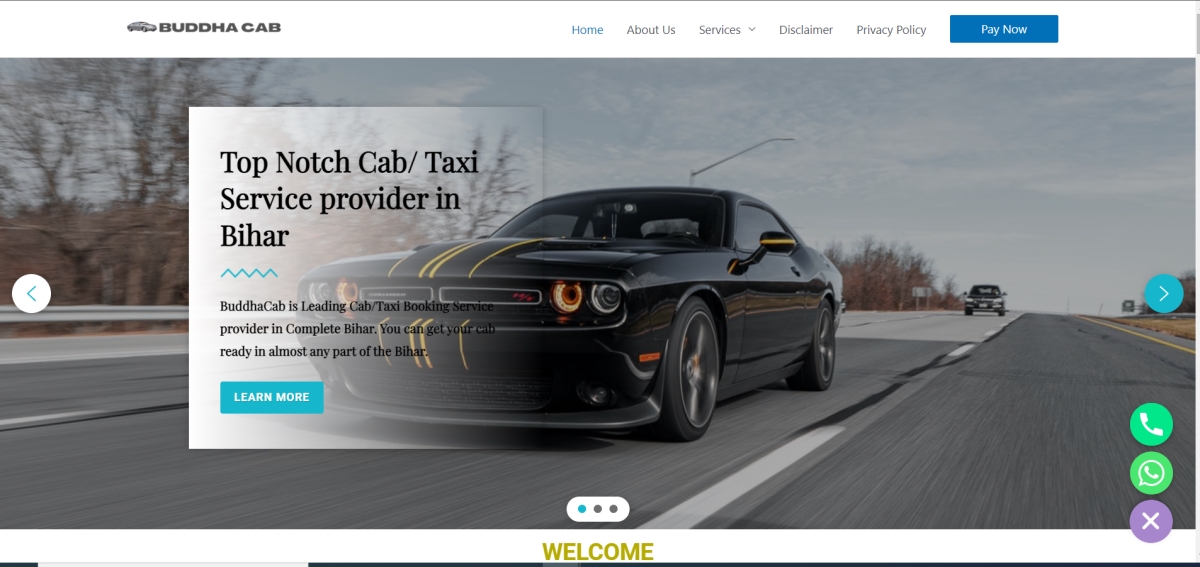Introduction
This case study outlines the successful development of a stunning cab/taxi provider website and the strategic implementation of SEO to improve its visibility and ranking on Google.
Background
The cab/taxi industry is highly competitive, with numerous service providers vying for customers. Our client sought to establish a strong online presence through an aesthetically pleasing and functional website. Additionally, they aimed to leverage SEO to rank higher on Google, ensuring their services would be easily discoverable by potential customers.
Key Strategies and Steps
1. Website Design and Development
- A user-friendly and visually appealing website was designed, featuring a responsive layout for seamless access on all devices.
- A booking system with intuitive navigation was integrated to facilitate easy reservations.
- Essential information, including service areas, pricing, and contact details, was prominently displayed.
2. Comprehensive Content
- Engaging and informative content was created to showcase the client’s services, fleet, and commitment to customer satisfaction.
- A blog section was added to regularly publish content relevant to the industry, improving user engagement and SEO.
3. SEO Strategy
- Extensive keyword research was conducted to identify relevant search terms within the taxi and cab industry.
- On-page SEO was implemented, optimizing meta titles, descriptions, and content for target keywords.
- Quality backlinks were built through partnerships and guest posting on industry-related websites.
- Local SEO was prioritized, including Google My Business optimization and consistent NAP (Name, Address, Phone Number) across online directories.
4. User Experience (UX) Optimization
- The website’s navigation and layout were designed with user experience in mind, ensuring easy access to essential information and the booking system.
- Page load times were optimized for faster performance, improving both user satisfaction and SEO rankings.
5. Mobile Responsiveness
- The website was optimized for mobile devices, as a significant portion of users access taxi services via smartphones.
- Mobile-friendly design elements were incorporated to enhance the mobile user experience.
6. Analytics and Monitoring
- Google Analytics and other SEO tools were employed to track website traffic, user behavior, and keyword rankings.
- Regular monitoring of these metrics allowed for data-driven decision-making.
7. SEO Content Strategy
- An ongoing content strategy was implemented, producing high-quality blog posts and articles targeting relevant keywords.
- Content was designed to inform users and address their pain points, establishing the website as an authority in the industry.
8. Social Media Integration
- Social media profiles were linked to the website, enabling users to engage with the brand across various platforms.
- Social sharing buttons were added to blog posts, encouraging users to share content.
Results and Achievements
- The website was successfully launched, providing a stunning and user-friendly interface for visitors.
- SEO efforts led to significant improvements in Google rankings for target keywords.
- Organic traffic steadily increased, with a notable boost in bookings from online visitors.
- The client’s brand became more visible and recognizable in the highly competitive cab/taxi industry.
Conclusion
This case study demonstrates how the strategic development of a visually stunning cab/taxi provider website, coupled with a well-executed SEO strategy, can significantly improve online visibility, user engagement, and overall business success. By prioritizing user experience, quality content, and SEO optimization, our client achieved their goal of creating a strong online presence and ranking higher in Google search results within the competitive taxi service industry.
